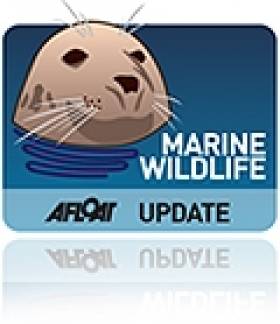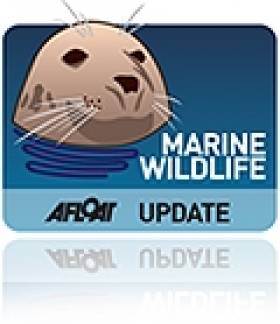Displaying items by tag: Bunratty Castle
Shannon's First Recorded Dolphin Spotted Again 20 Years On
#MarineWildlife - The 21st year of dolphin research in the Shannon Estuary is off to an amazing start after the first ever dolphin recorded in the estuary was spotted on the Kerry coast.
As the Shannon Dolphin and Wildlife Foundation (SDWF) reports, the dolphin known as 'No 1' was sighted in Brandon Bay on Saturday 25 May swimming in a group of three.
No 1 is happily a familiar sight in the region, having been recorded most years since the project began in 1993.
"It has long been known that Shannon dolphins regularly use Tralee and Brandon Bays but how important the area is in not clear," says the SDWF on its blog. "If we are to protect the Shannon dolphins we need to ensure we identify all their important habitats and extend protection to these areas if necessary."
Meanwhile, its been confirmed that the trio of bottlenose dolphins who took up residence near Bunratty Castle in the spring have been observed in the mainstream of the Shannon Estuary.
The three were spotted on the first monitoring trip of the summer from Kilrush last week by SDWF researchers of Moneypoint.
"This demonstrates again the value of long term monitoring and the power of a photo ID catalogue to monitor the Shannon dolphins," says the SDWF blog.
In other cetacean news, an in-depth discussion of the Shannon's dolphins and the Irish Whale and Dolphin Group's (IWDG) research of bottlenose dolphins around the Irish coastline was broadcast on Derek Mooney's afternoon show on RTÉ Radio 1 recently.
A podcast of the 30-minute segment of Mooney Goes Wild from Friday 31 May is available to download HERE.
Bunratty Dolphins Move On To Deeper Waters
#MarineWildlife - The trio of bottlenose dolphins who took up residence close to Bunratty Castle recently have apparently moved back out to deeper water after growing concerns for their well-being.
As previously reported on Afloat.ie, the dolphins had made their home opposite Durty Nellys pub in the Ratty River, which flows into the Shannon Estuary.
Simon Berrow of the Irish Whale and Dolphin Group (IWDG) explained that it's not unusual for dolphins to forage for food in waterways that feed into the estuary, though they usually return to the main catchment on their own shortly after.
With fears that their acoustic abilities were impaired, preventing them from navigating downstream past a series of bridges and concrete pillars between them and the main watercourse, a rescue attempt had been planned for late last week.
But as the Clare People reports, this was called off as the dolphins were spotted less and less frequently in the area.
Later hydrophone tracking by the IWDG led experts to discover that the cetaceans were able to come and go as they pleased.
Despite this, dolphins only have a limited ability to survive in fresh water, and can develop serious kidney and skin problems if exposed for a significant length of time.
Dolphin Trio At Home Near Famous Watering Hole
#MarineWildlife - Three bottlenose dolphins have made a new home close to a famous tourist watering hole in Co Clare.
According to the Irish Independent, the trio have taken up residence next to Durty Nellys pub in the Ratty River, which flows past Bunratty Castle into the Shannon Estuary.
The Irish Whale and Dolphin Group (IWDG), which has been tracking the group, believes they originated from a larger group populating the estuary.
As the IWDG's Simon Berrow explains, such dolphins are known to forage for food in rivers that feed into the estuary, and will return to the main catchment on their own.
While the risk of stranding in the shallower waters of rivers is unlikely, there is growing concern that the dolphins have been in the area for longer than expected.
"We can't rule out the possibility that their acoustic abilities may be impaired by the series of bridges and concrete pillars that span one of the bridges, and that they may be finding it difficult to navigate as a result of an 'acoustic trap'," says Berrow.
The IWDG says it is in discussion with the National Parks and Wildlife Service as to what options are available to step in to shepherd the trio back to the Shannon Estuary if necessary.































































